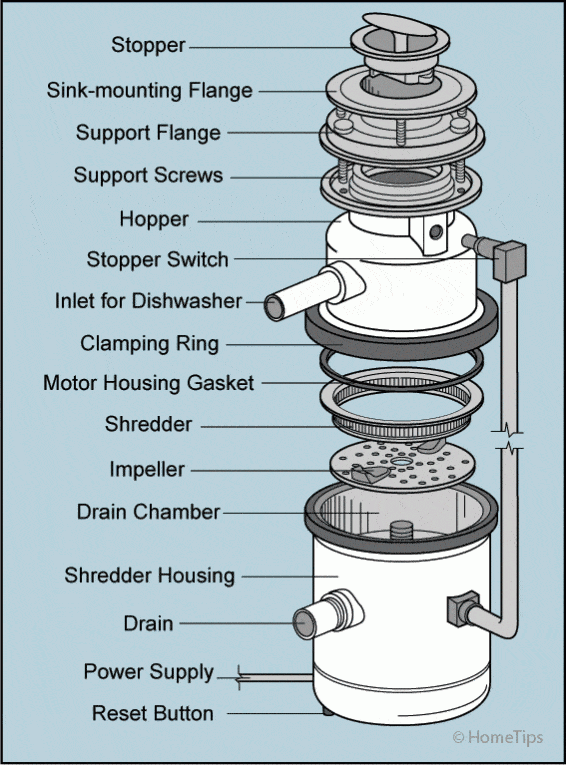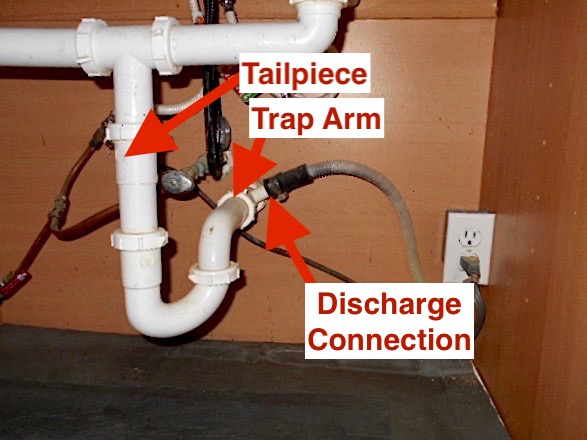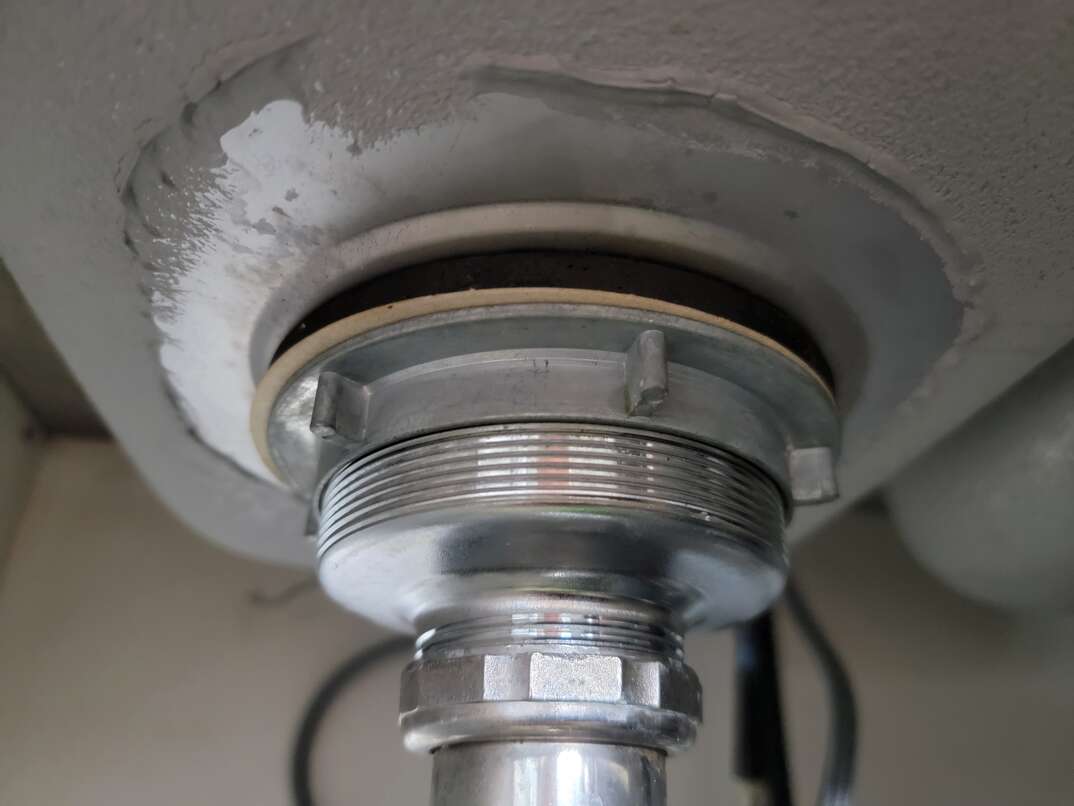Installing a new kitchen sink can be a daunting task, but with the right tools and knowledge, it can be a rewarding DIY project. One important aspect of this process is installing the kitchen sink drain, which is responsible for draining the water and debris from your sink. In this article, we will guide you through the steps of installing a kitchen sink drain and provide helpful tips along the way.How to Install a Kitchen Sink Drain
The kitchen sink drain basket is a crucial component of your sink as it catches food scraps and prevents them from clogging your pipes. To install the basket, start by placing the rubber gasket on the underside of the sink followed by the cardboard friction ring. Then, insert the basket into the sink's drain hole and secure it in place with the locknut. Finally, attach the tailpiece and tighten the connection with pliers.How to Install a Kitchen Sink Drain Basket
The kitchen sink drain pipe connects the sink to the main drain line. To install this, join the tailpiece to the drain basket using a slip nut and washer. Then, attach the other end of the tailpiece to the main drain line using a P-trap. Make sure to use plumber's tape to create a tight seal and tighten all connections with pliers.How to Install a Kitchen Sink Drain Pipe
The kitchen sink drain trap is a U-shaped pipe that prevents sewer gases from entering your home. To install this, connect the P-trap to the tailpiece and the main drain line. Make sure to leave room for the trap arm, which connects to the sink's drain pipe. Use plumber's tape to secure all connections and tighten them with pliers.How to Install a Kitchen Sink Drain Trap
The kitchen sink drain assembly includes the drain basket, pipe, and trap. To install this, follow the steps mentioned above for each component. Make sure to use plumber's tape and tighten all connections to prevent leaks. Once everything is installed, run water through the sink to test the drain's functionality.How to Install a Kitchen Sink Drain Assembly
If you have a garbage disposal, the installation process will be slightly different. Start by installing the drain basket as mentioned above, but instead of connecting the tailpiece to the main drain line, attach it to the garbage disposal's drain outlet. Then, connect the P-trap to the tailpiece and the main drain line. Make sure to follow the manufacturer's instructions for installing the garbage disposal.How to Install a Kitchen Sink Drain with Garbage Disposal
If your kitchen sink has a dishwasher, you will need to install a dishwasher drain adapter. This adapter connects the dishwasher's drain hose to the sink's drain pipe. To install this, attach the adapter to the dishwasher's drain outlet and secure it with a hose clamp. Then, connect the other end of the adapter to the sink's drain pipe using another hose clamp.How to Install a Kitchen Sink Drain with Dishwasher
The kitchen sink drain flange is the visible part of the drain that sits on top of the sink. To install this, start by applying plumber's putty to the underside of the flange. Then, place the flange in the sink's drain hole and press down to create a tight seal. Finally, secure the flange in place by tightening the mounting screws.How to Install a Kitchen Sink Drain Flange
The kitchen sink drain stopper is a device that allows you to stop or drain water from the sink. To install this, start by removing the old stopper if there is one. Then, insert the new stopper into the drain and secure it in place with the mounting screw. Make sure the stopper is in the open position before tightening the screw.How to Install a Kitchen Sink Drain Stopper
The kitchen sink drain strainer is a mesh basket that sits in the drain and catches food scraps. To install this, place the strainer in the drain hole and tighten the mounting nut underneath. Make sure to use plumber's putty to create a tight seal. To clean the strainer, simply remove it from the drain and empty out the debris. In conclusion, installing a kitchen sink drain may seem like a daunting task, but with the right tools and knowledge, it can be a manageable DIY project. Make sure to follow the steps mentioned in this article and use plumber's tape to create tight seals and prevent leaks. With a properly installed kitchen sink drain, you can enjoy a functional and efficient sink in your home.How to Install a Kitchen Sink Drain Strainer
How to Properly Install Kitchen Sink Drains for a Functional and Beautiful Kitchen
/how-to-install-a-sink-drain-2718789-hero-b5b99f72b5a24bb2ae8364e60539cece.jpg)
Why Properly Installing Kitchen Sink Drains is Important
:max_bytes(150000):strip_icc()/how-to-install-a-sink-drain-2718789-hero-24e898006ed94c9593a2a268b57989a3.jpg) Properly installing
kitchen sink drains
is crucial for the functionality and aesthetic of your kitchen. A
kitchen sink
is one of the most used fixtures in a home, and a poorly installed drain can cause a lot of inconvenience and frustration. It can also lead to leaks, clogs, and unpleasant odors. Additionally, a properly installed
kitchen sink drain
can enhance the overall look of your kitchen, adding to the design and value of your home.
Properly installing
kitchen sink drains
is crucial for the functionality and aesthetic of your kitchen. A
kitchen sink
is one of the most used fixtures in a home, and a poorly installed drain can cause a lot of inconvenience and frustration. It can also lead to leaks, clogs, and unpleasant odors. Additionally, a properly installed
kitchen sink drain
can enhance the overall look of your kitchen, adding to the design and value of your home.
Materials You Will Need
 Before you begin the installation process, make sure you have all the necessary materials and tools. These include a
kitchen sink drain kit
, plumber's putty, a wrench, and a screwdriver. It's important to choose a
kitchen sink drain kit
that matches the size and design of your sink to ensure a proper fit.
Before you begin the installation process, make sure you have all the necessary materials and tools. These include a
kitchen sink drain kit
, plumber's putty, a wrench, and a screwdriver. It's important to choose a
kitchen sink drain kit
that matches the size and design of your sink to ensure a proper fit.
The Installation Process
 Now that you have all the materials, it's time to start the installation process. The first step is to remove the old drain and clean the area thoroughly. Any leftover putty or debris can affect the sealing of the new drain. Next, roll a small amount of plumber's putty into a rope and place it around the edge of the
kitchen sink drain
opening.
Place the
kitchen sink drain
into the opening and tighten it with a wrench. Make sure it is snug but not too tight, as this can cause damage to the sink. Next, attach the
drain trap
to the bottom of the drain, making sure all connections are secure. The
drain trap
is what prevents debris from clogging the drain and also allows for easy cleaning.
Once the
kitchen sink drain
is in place, test it by running water and checking for any leaks. If there are no leaks, you can proceed to seal the edges of the drain with silicone caulk for added protection. Wipe away any excess caulk and let it dry completely before using the sink.
Now that you have all the materials, it's time to start the installation process. The first step is to remove the old drain and clean the area thoroughly. Any leftover putty or debris can affect the sealing of the new drain. Next, roll a small amount of plumber's putty into a rope and place it around the edge of the
kitchen sink drain
opening.
Place the
kitchen sink drain
into the opening and tighten it with a wrench. Make sure it is snug but not too tight, as this can cause damage to the sink. Next, attach the
drain trap
to the bottom of the drain, making sure all connections are secure. The
drain trap
is what prevents debris from clogging the drain and also allows for easy cleaning.
Once the
kitchen sink drain
is in place, test it by running water and checking for any leaks. If there are no leaks, you can proceed to seal the edges of the drain with silicone caulk for added protection. Wipe away any excess caulk and let it dry completely before using the sink.
Final Thoughts
 Properly installing a
kitchen sink drain
may seem like a daunting task, but with the right tools and materials, it can be a simple and rewarding DIY project. A well-installed
kitchen sink drain
not only ensures the proper functioning of your sink but also adds to the overall design and value of your kitchen. So take your time, follow these steps, and enjoy a beautiful and functional kitchen sink for years to come.
Properly installing a
kitchen sink drain
may seem like a daunting task, but with the right tools and materials, it can be a simple and rewarding DIY project. A well-installed
kitchen sink drain
not only ensures the proper functioning of your sink but also adds to the overall design and value of your kitchen. So take your time, follow these steps, and enjoy a beautiful and functional kitchen sink for years to come.








:max_bytes(150000):strip_icc()/how-to-install-a-sink-drain-2718789-04-5715d67f5b7d41429d42bf705bb70e2c.jpg)
















/sink-drain-trap-185105402-5797c5f13df78ceb869154b5.jpg)



























/how-to-install-a-sink-drain-2718789-hero-24e898006ed94c9593a2a268b57989a3.jpg)








